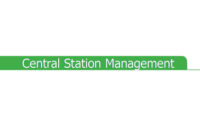

Our cover story, “Monitoring Mentors,” shares the accounts of the winners of the second annual Central Station Excellence Awards. These awards, which are co-sponsored bySDMMagazine, are presented by the Central Station Alarm Association to recognize UL listed central stations and their employees who perform exceptionally in the business of providing monitoring services to subscribers.
In telling the stories of Diebold’s Event Monitoring Center, CenterPoint Technologies’ M.J. Vance, and Alarm Detection Systems’ Rick Cahill, the author exposes some best practices — both in management and technology application — which demonstrate the extent to which monitoring professionals can successfully support a security operation with expert, high-speed response tailored to their customers’ requirements.
The article, written bySDM’s Maggie McFadden, begins on page 53. If you operate a UL-listed central station — either as an installation provider or as a wholesale business — please consider applying for this award in 2008. You do not need to be an association member to apply. There are three award categories: Central Station of the Year, Central Station Manager of the Year, and Central Station Operator of the Year. For more information, contact CSAA at (703) 242-4670 or visitwww.csaaul.org.
In the story, “Web-Based Alarm Management: Show Me the Money!”SDM’s Russ Gager explores the growing market for customer-managed monitoring made possible by specialized security products that communicate via the Internet. When alarms and events can be transmitted not only to a professional monitoring station, but simultaneously to customers with Web-enabled devices, security experts find that subscribers are willing to pay a premium for the service.
When this technology first became available, some thought it might take the place of professional monitoring, but instead it appears that “self-monitoring” is becoming an adjunct service for which subscribers can more readily keep abreast of their home or business security status. Alerts can be in the form of text messages, automated calls, and video alerts of crimes in progress.
“The more the customer is involved with their security system, the more information they get from it and the more they see value in the system, the less likely they are to churn,” says Gilles Prefontaine of Active Response Monitoring, in the article which begins on page 59. “It’s a great opportunity to increase RMR.”
In today’s market, I’ve seen a renewed emphasis on monitoring as one means of building a recurring revenue base, in order to offset the price erosion security companies have lately experienced in design and installation fees. For residential contractors, a premium monitoring package can be tied to a home video system. For non-residential systems integrators, off-site monitoring can back up a client’s own command-and-control center. Additionally, clients can subscribe to Web-based services for short-term data and video storage. And integrators can manage clients’ systems, such as building access, through their monitoring station. Facilities that are considered critical infrastructure are going to have in-house security responders, but commercial facilities aren’t likely to retain security officers around-the-clock.
The roots of professional monitoring are in the fire detection and notification industry, but the opportunities for creating new revenue streams through self-monitoring and central-station-managed security services today are limitless. UseSDM’s 2007 Guide to Monitoring Services atwww.sdmmag.com/CDA/monitoringguidefor more information.


